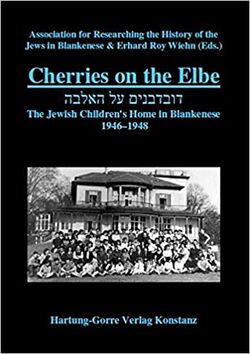Category:Warburg Children's Home (subject)
Warburg Children's Home in Hamburg-Blankenese (see Holocaust Children Studies)
Overview
The sixteen acre Kosterberg estate owned by Max Warburg, the prosperous Hamburg Jewish banker, had been in the family for generations. In October 1941 it was seized by the Nazi regime and turned over to the army for use as officers' quarters and a military hospital. Following the German defeat, the British established a field hospital on the premises. A few months later, Eric Warburg (Max's son) returned to Germany and requested the return of the property. As a member of the Joint Distribution Committee's board of directors (his uncle Felix Warburg was one of the founders of the JDC), Eric decided to turn over the estate to the JDC for use as a shelter for Jewish orphans rescued from the concentration camps.
Over 300 children (most of them liberated in Bergen-Belsen and Theresienstadt) passed through the Warburg home in the three years of its operation, mostly heading to Palestine/Israel between January 1946 and March 1948.
Social Workers
Sally Wideroff (born Sally Bendremer), a JDC relief worker, spent thirteen months in the British Zone of Germany where she worked first in the Bergen-Belsen displaced persons camp and later at the Warburg children's home in Hamburg-Blankenese. While in Bergen-Belsen, Sally served as the liaison between representatives of the JDC, UNRRA and the DP camp's Central Jewish Committee. She also worked to establish educational, recreational and cultural programs for the DPs, including a camp library and film program. Sally was instrumental in opening the Warburg children's home, where she served as the JDC's child welfare specialist. In April 1946 she escorted a group of 105 orphans from the home to Marseilles, on the first leg of their journey to Palestine. In Marseilles the Warburg home orphans joined another group of children to form the first postwar Youth Aliyah transport.
Reuma Weizman, at the age of 22, volunteered to leave her home in Palestine to help care for the orphans of Blankenese. Born in Jerusalem, Reuma Schwartz was educated at the Shomria boarding school in Mishmar Ha'emek and only saw her parents every few months. She became involved with the kibbutz way of life, particularly the Hashomer Hatzair youth movement. Hashomer eventually took her on the path to care for war orphans in Germany following her studies at the Seminar Hakibbutzim teachers training college in Tel Aviv. Among the few items that the young teacher took to Blankenese was a much-cherished wooden recorder that she had received during her kibbutz school days. On arriving in Blankenese, she found scores of children who were ghostly pale and traumatized. Most of the youngsters knew little to nothing about Judaism. Weizman became the children's teacher, surrogate mother and best friend rolled into one. She had an open door policy, recalled some of the kinder, now in their late 60s and 70s. They would gather in her room and on her veranda overlooking the River Elba at Blankenese. The young sabra also played music - particularly Hebrew songs - to the children, who would try to mimic her blowing into her recorder. Reuma later married Israel Air Force pilot and future president of Israel, Ezer Weizman.
Book : Cherries on the Elbe (2013)
- Cherries on the Elbe: The Jewish Children's Home in Blankenese, 1946-1948
"George Schwab, Foreword to the English Edition: The impression one obtains reading Cherries on the Elbe is that the Jewish children's home at the handsome Warburg estate in Hamburg-Blankenese overlooking the Elbe River was established in January 1946. Technically that could be correct because the date coincides with the arrival of the first group of children from the displaced person's camp of Bergen-Belsen. However, when I arrived in Hamburg by train from Neustadt/Holstein's displaced persons' camp in late September or early October 1945, I wandered around aimlessly with a small suitcase at Hamburg's largely destroyed but bustling main railroad terminal (Hauptbahnhof) until the German police picked me up and brought me to the estate which was not an abandoned place. On the contrary, it was inhabited by a lively and variegated bunch of Jewish teenagers and some adults. Most had survived the dreadful acts of barbarism that had been inflicted on them in ghettos, concentration and labor camps that were administered by Germans and their collaborators. The idyllic setting of the estate, the ample food, the benevolent and sensitive American Joint Distribution Committee together with the British Jewish Relief Unit administrators and teachers mostly from the Jewish Brigade notwithstanding, no one thought that the estate was the final destination. The burning desire of most survivors was to leave the cursed soil of Germany for the ancient homeland of the Jews. That feeling was reinforced by the administrators and teachers who, in addition to teaching Hebrew, impressed the survivors with the rich history of the Jewish people and the geography of the Holy Land. The Sabbath was welcomed by the lighting of candles and the usual prayer preceding the fine meal at the estate's White House. Following it we gathered as we did most evenings for cultural activities that included the singing of Hebrew songs, mostly composed by Jewish settlers in Palestine, and folk-dancing."--Publisher description.
External links
Pages in category "Warburg Children's Home (subject)"
This category contains only the following page.
Media in category "Warburg Children's Home (subject)"
This category contains only the following file.
- 2013 Ingram.jpg 313 × 500; 32 KB

